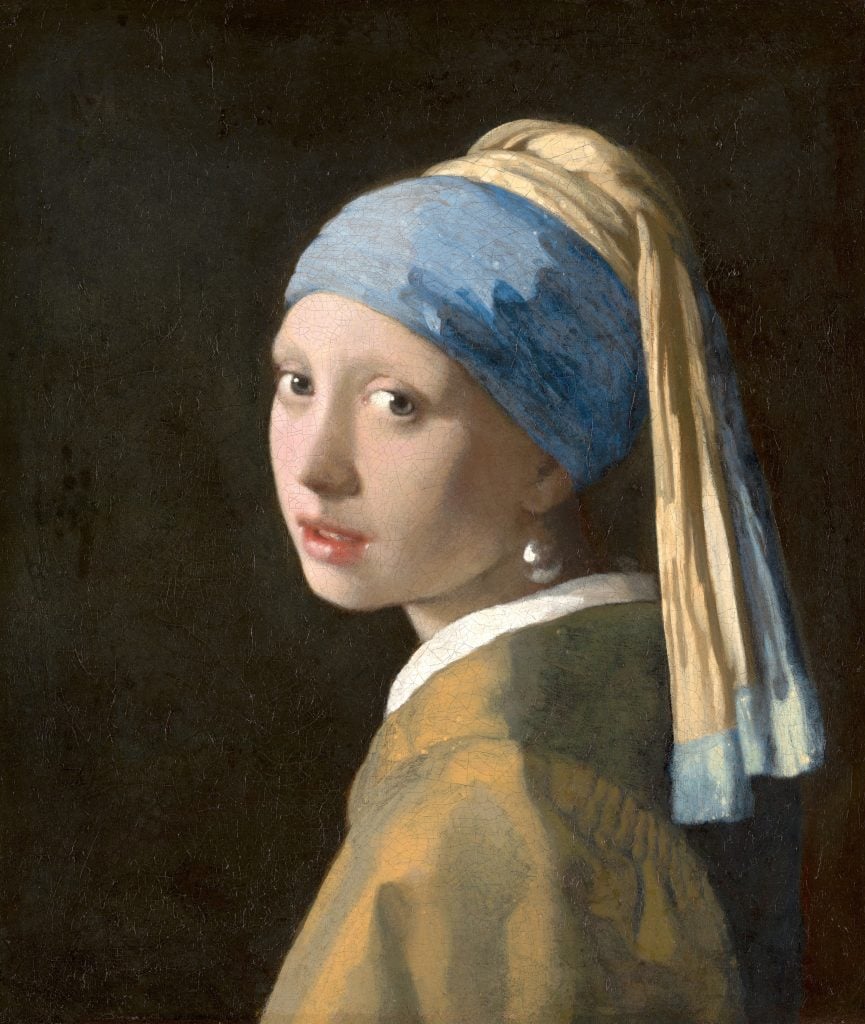Have you ever wondered who the most ‘Mindful‘ and demure ladies in art history were? From renaissance portraiture to impressionist musings, the representation of women in art is as varied as it is revealing. In a modern era where TikTok and social media influencers shape our standards of ‘mindfulness’ and demureness, it’s fascinating to compare these with the portrayals of women from centuries past.

Defining ‘Mindfulness’ and ‘Demureness’ in Art
Mindfulness and demureness are concepts rooted in cultural and societal expectations. ‘Mindful’ implies a sense of awareness, consideration, and quiet reflection. ‘Demure’ conveys modesty, reserve, and propriety. Within the context of art, these characteristics can be identified through visual elements such as body language, attire, and expressions.
The New Trend of Demure Living
The internet has been abuzz with trends encouraging women to adopt a more demure and mindful lifestyle. Influencers like Jools Lebron have become vocal advocates for ‘considerate’ appearances in the workplace. Her TikTok videos, blending humor and social critique, emulate demureness with makeup tips and proper dressing.
These modern perspectives have inspired museums to showcase their collections in a new light. By highlighting historically ‘mindful’ and ‘demure’ female figures, institutions are connecting past themes with contemporary social media trends.
Historical Figures Reflecting Mindfulness and Demureness
Johannes Vermeer’s “Girl with a Pearl Earring”
One of the quintessential examples of demureness is Johannes Vermeer’s “Girl with a Pearl Earring.” Painted around 1665, this masterpiece captures a young woman in a simple yet elegant composition. Her calm gaze, understated attire, and subtle accessories like the titular pearl earring emphasize modesty and grace.
Werner van den Valckert’s “Three Regentesses and the ‘House Mother’ of the Amsterdam Lepers’ Asylum” (1624)
In this painting, the regentesses epitomize professional and mindful dressing of the 17th century. Their somber black gowns and white ruff collars symbolize authority, responsibility, and a subdued demeanor—qualities celebrated in their roles caring for the lepers’ asylum.
Museum Contributions to the Demure Trend
Rijksmuseum’s TikTok Entry
The Rijksmuseum showcased Werner van den Valckert’s “Three Regentesses and the ‘House Mother’ of the Amsterdam Lepers’ Asylum” on TikTok, underlining their focus on professional decorum and mindfulness. The emphasis was on quiet elegance, reflective of societal roles at the time.
MAK Vienna’s Guide to Museum Etiquette
MAK Vienna provided a guide on TikTok about how to be demure within a museum setting. Their tips included leaving space when viewing artworks and opting for quiet shoes and smaller bags to show consideration for other visitors, underlining a mindful approach to art appreciation.
Brooklyn Museum’s Artworks
The Brooklyn Museum shared a variety of works on TikTok highlighting demureness. These included:
| Artwork | Artist | Year | Notable Features |
|---|---|---|---|
| Portrait of Madame Tallien | Jean-Bernard Duvivier | 1806 | Simple attire and composed demeanor. |
| Woman with Earrings | Unknown | 100–105 C.E. | Minimalist jewelry, thoughtful expression. |
| Beauty Grinding Ink for Writing Poetry | Unknown | – | Depicts scholarly pursuits, indicative of contemplative lifestyle. |
| Woman with Bouquet | Laura Wheeler Waring | ca. 1940 | Modest clothing, serene facial expression. |
These selections from their collection emphasize an array of historical and cultural contexts where women displayed mindfulness and demureness.
Comparing Demure Influences Across Art Periods
The Impressionist Era
Artists like Edgar Degas and his contemporaries possess a complex relationship with the demure. While some of his works depict women in private, contemplative moments, others reveal the nightlife of Paris, highlighting the dual nature of female representation during the period.
The Renaissance to Modern Day
In Renaissance art, demureness was often portrayed through religious and mythological subjects. For example, the Madonna figures present a perfect blend of devotion, humility, and grace. Moving into the 19th and 20th centuries, portraits started embracing individualism while maintaining these understated qualities.
18th Century Fashion and Demureness
The 18th-century fashion in art often depicted elaborate wigs and ornate dresses. However, the essence of mindfulness and demureness remained, as seen in the careful attention to posture and restrained facial expressions.

The Role of Expression and Posture
Expression: Windows to the Soul
Facial expressions in art can significantly reflect mindfulness and demureness. A serene, contemplative look often conveys an inner world rich in thought and awareness. For instance, Leonardo da Vinci’s “Mona Lisa” exhibits a subtle, enigmatic smile that speaks volumes about her calm demeanor.
Posture: Conveying Grace and Modesty
The way a subject is seated or stands tells much about their personality. Relaxed but upright postures, gentle hand positioning, and closed body language often suggest demureness. A good example is Lady with an Ermine by Leonardo da Vinci. The lady’s controlled posture and firm but gentle grip of the ermine echo her composed nature.
Women in Domestic Scenes
Vermeer’s Domestic Interiors
Johannes Vermeer’s works like “The Milkmaid” and “Woman Holding a Balance” highlight women engaged in everyday activities. These ordinary scenes are imbued with a deep sense of mindfulness and tranquility. The focus on small tasks, rendered with meticulous detail, enhances the subjects’ contemplative nature.
Genre Paintings
Genre paintings often depicted daily life, and women engaged in domestic chores were a common theme. Such paintings captured demure qualities by focusing on the quiet dignity of the subjects. For example, “The Lacemaker” by Vermeer presents a woman entirely absorbed in her craft, mirroring a reflective, mindful existence.

Depictions of Historical Figures
Queens and Leaders
Historical portraits of queens and other female leaders often reflect a blend of regal authority and demureness. Their attire—opulent yet dignified—and their calm, measured expressions reinforce their elevated status and mindful disposition.
Religious Figures
Depictions of saints and biblical figures often embody ultimate demureness and mindfulness. For instance, many portrayals of the Virgin Mary illustrate her as a paragon of virtue and grace. Artists like Sandro Botticelli and Rafael used color, light, and composition to emphasize her serene and contemplative nature.
The Modern Interpretation of Demureness in Art
Contemporary Takes
Modern artists continue to explore the theme of demureness, albeit in new contexts. Female subjects in current art can be seen adopting subtle, mindful expressions and reserved, considered postures but often infused with a sense of self-awareness and agency unknown in prior eras.
The Role of Social Media
Platforms like TikTok are re-contextualizing historical art for new audiences. By presenting classical depictions of women in a humorous yet insightful manner, museums are casting light on enduring themes of demureness and mindfulness in a relatable way.
Reinterpretations and Critiques
Many contemporary artists also critique the traditional notions of demureness. They challenge the boundaries of modesty and raise questions about societal expectations of women, inviting viewers to reconsider the definitions of mindfulness and demureness.

Final Reflections
The portrayals of demure and mindful ladies in art history reveal much about the values and expectations of different eras. From Vermeer’s tranquil interiors to the composed queens and saints of the Renaissance, these images offer a window into the timeless qualities of grace, modesty, and self-awareness. Comparing these historical representations with today’s social media trends underscores an ongoing fascination with the concept of demureness, suggesting that while the settings and mediums may change, the core attributes of mindfulness and modesty remain pertinent.
Understanding these shifts and connections encourages us to appreciate both the enduring and evolving nature of such ideals in the art and culture frameworks. Whether through a 17th-century portrait or a 21st-century TikTok video, the expressions of these qualities continue to resonate and inspire.


